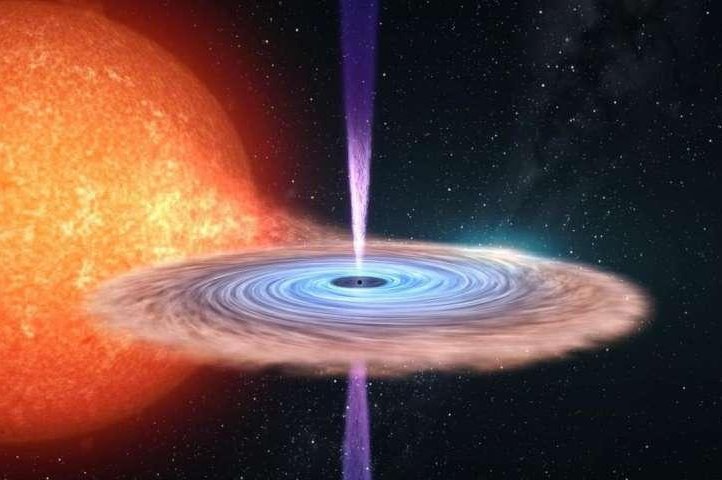Scientists are getting closer to understanding the forces and physics that generate relativistic jets, the powerful beams of plasma ejected along the rotational axis of black holes. Photo by University of Southampton
Oct. 31 (UPI) -- For the first time, astronomers have measured how quickly relativistic jets 'switch on' and become luminous after they're launched from a black hole.
The research, published this week in the journal Nature Astronomy, promises to bring scientists a step closer to understanding how relativistic jets form.
Relativistic jets are the powerful rays of energized particles that extend outward from many black holes. Scientists still aren't sure how they form, but some theorize the black hole's intense gravity contorts localized magnetic fields, putting magnetized plasma in the black hole's accretion disk under extreme pressure.
Eventually, the pressurized plasma erupts in opposite directions along magnetic pillars extending along the black hole's rotational axis.
In 2015, astronomers observed one of the brightest flashes of light they'd ever seen. The light originated from V404 Cygni, a binary system 7,800 light-years from Earth, consisting of a star and a black hole orbiting around one another. The black hole boasts a relatively small mass of just seven suns.
Scientists were able to measure a 0.1-second delay between the emission of X-rays from the base of the jets, and the bright flash of visible light, produced as plasma was propelled through the pillars.
"Scientists have been observing jets for decades, but are far from understanding how nature creates these mind-bogglingly vast and energetic structures," Poshak Gandhi, astronomer at the University of Southampton, said in a news release.
"Now, for the first time, we have captured the time delay between the appearance of X-rays and the appearance of optical light in a stellar-mass black hole at the moment jet plasma is activated," Gandhi said. "This lays to rest the controversy regarding the origin of the optical flashes, and also gives us a critical distance over which jet plasma must have been strongly accelerated to speeds approaching that of light."
Scientists liken their discovery to measuring the distance between where multiple light beams exited the Death Star from Star Wars and the point at which the light beams combine to form the death ray.
"But the physics of black hole jets has nothing to do with lasers or the fictional Kyber crystals that power the Death Star. Nature has found other ways to power jets," said Gandhi. "Gravity and magnetic fields play the key roles here, and this is the mechanism we are trying to unravel."
In addition to moving scientists closer to an understanding of relativistic jets, the latest observations also suggest the same physics that govern the plasma ejected from small black holes also control the jets protruding from supermassive black holes found at the center of galaxies.















